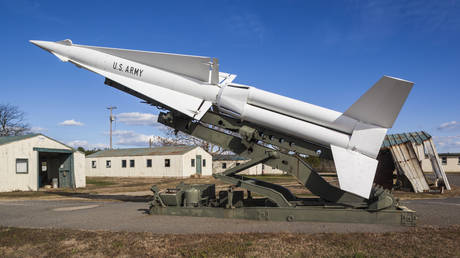ARTICLE AD BOX
ROME — Italy’s right-wing government is turning its back on two historical referendums to place a bet on unproven nuclear technology.
Some 35 years after Italy’s last nuclear power plant closed, Prime Minister Giorgia Meloni and her ministers are drawing up plans to go nuclear once again in a bid to meet a growing demand for decarbonized electricity. This time, however, it will be through next-generation nuclear technologies called Small Modular Reactors (SMRs) and Advanced Modular Reactors (AMRs).
“We need to make some long-term choices. That’s why we have chosen to restart the development of nuclear power, making a bet on mini-reactors that are safe and clean sources of energy,” Meloni said in a speech earlier this year.
On Wednesday, Italy’s Environment and Energy Security Ministry announced that the law outlining the national plan to restart nuclear energy production had cleared the final institutional hurdle and was now ready to be sent to parliament.
Speaking at a July 16 event organized by Italy’s main business lobby, Confindustria, Environment and Energy Security Minister Gilberto Pichetto Fratin said should Rome approve it, the first plants could be operational by the end of this decade or in the early 2030s.
According to government estimates, nuclear fission could meet from 11 percent to 22 percent of national demand by 2050.
Italy was previously home to a number of nuclear power plants. But following the 1986 meltdown at the Chernobyl plant in Ukraine, which sent a cloud of radioactive dust over much of Europe, Italians voted against nuclear power in a referendum the following year. By 1990 Italy had shuttered its plants and nuclear power was no more.
In 2011 the decision was reconfirmed with another referendum shortly after the Fukushima disaster in Japan.
“This government has demonstrated up until now that they aren’t taking into account at all what has been a very clear expression of the popular will as demonstrated in two referendums,” said Enrico Cappelletti, a member of the lower house of parliament and part of the opposition Five Star Movement.
Critics such as Cappelletti argue the process will be slow and expensive, and will increase power bills for Italians — already the second highest in Europe. However, the government insists that adding nuclear to the power mix is crucial to meeting growing energy demand, which is forecast to double by 2050.
Splitting the atom
The mid-July Confindustria gathering saw business and political community elites pack into a parliamentary committee room.
With billions of euros in investment on the line — an EY study estimates Italy’s nuclear market could reach €50 billion by 2050 — it’s no surprise the event was an irresistible draw for the companies in pole position to benefit. Although no nuclear power plants operate in the country, several Italian engineering companies are active in the sector abroad.
 In June, Italy joined the French-led European Nuclear Alliance, an initiative aimed at promoting nuclear energy throughout the EU. | Caroline Blumberg/EPA
In June, Italy joined the French-led European Nuclear Alliance, an initiative aimed at promoting nuclear energy throughout the EU. | Caroline Blumberg/EPAUltimately, however, any nuclear renaissance would almost certainly require the participation of firms in countries that already have active nuclear power plants, such as France or the U.S.
Utility company Enel, infrastructure giant Leonardo, and energy engineering firm Ansaldo Energia — all under varying levels of state ownership — have formed a consortium called Nuclitalia to study viable options for a return to nuclear power. In June, Italy joined the French-led European Nuclear Alliance, an initiative aimed at promoting nuclear energy throughout the EU.
Speaking at the Confindustria event, Fratin said there was a need for a continuous source of power to integrate with the variable energy produced by renewables. Nuclear was the obvious choice, he said, though officially, a final decision will follow a careful study of the costs and benefits.
“We are a country that at the moment … is not able to meet its national demand for electricity,” Fratin said. “There is only one path for us to take if we want to remain among the rich countries of the world.”
The lively discussion demonstrated that the debate has moved beyond the shadow of Chernobyl to focus on financial arguments.
“When we talk about sustainability, we need to look at it from all angles,” Katiuscia Eroe, a representative of the climate NGO Legambiente, told the gathering. “Including the logic of costs, and therefore, economic sustainability.” Nuclear, she added, wasn’t competitive with renewables given the huge investments needed to get it up and running.
Tiny tech
Stefano Monti, president of the European Nuclear Society, told POLITICO that nuclear power is key to providing a steady supply to the grid of decarbonized energy, known as the baseload, supplementing renewables in moments when there isn’t enough sun or wind.
The use of new technology is also politically important as it allows the government to argue that the prior referendums don’t apply.
SMRs use miniaturized technology in effect to factory-produce key reactor components, thereby achieving economies of scale and reducing costs. AMRs use non-traditional fission technology and are powered by spent fuel from other reactors, such as SMRs, potentially reducing the amount of nuclear waste that needs to be stored. Neither has ever been built in Western Europe — while in the U.S., one attempted SMR had to be abandoned after costs spiraled.
Monti said the government may ultimately revert to traditional power plant designs, even though these have incurred huge cost overruns in Europe in recent years. It may also be the case, he added, that the energy source will need to be subsidized for a while.
Still, Monti said, nuclear energy was financially competitive with solar and wind energy when considering the additional infrastructure, such as batteries, needed to make renewables sufficiently reliable to power the grid.
Michele Governatori, an academic and a member of climate think tank Ecco, said he didn’t think there would ultimately be any return to nuclear, “but that doesn’t mean that it won’t cause damage.” The buzz around nuclear, he said, was allowing the government to sidestep politically unpopular decisions on how to accelerate the build-out of renewables.
 The government estimates there’s a backlog of 150 gigawatts of renewable energy projects currently held up by paperwork. | Erdem Sahin/EPA
The government estimates there’s a backlog of 150 gigawatts of renewable energy projects currently held up by paperwork. | Erdem Sahin/EPAHe said the economics argue against fission — nuclear power is expensive and plants have to be running 24/7 for the finances to work. But given the fluctuating production levels of renewable energy, on sunny or windy days, nuclear energy might end up going unused.
The government estimates there’s a backlog of 150 gigawatts of renewable energy projects currently held up by paperwork. According to Governatori, Rome’s embrace of nuclear energy was a way of avoiding a showdown with regional governments over permitting problems, given that local authorities often hold up developments due to so-called NIMBY concerns.
There are also lobbying interests in play. “The big national champions have a bigger stake in nuclear than renewables,” said Governatori. Developers of renewable energy tend to be smaller “and are more distant from the businesses that are close to the state,” he said.
Convenient cudgel
The government’s 2024 energy and climate plan estimates that nuclear power could save approximately €17 billion in costs compared to an all-renewables strategy. However, a report by Italy’s central bank found that while adding nuclear to the grid may help flatten swings in electricity prices, it was unlikely to deliver any savings.
A paucity of know-how risks delaying construction and adding costs, while “the processing, enrichment and preparation of fuel is concentrated in a few plants, largely in countries with elevated political risk (Russia first and foremost),” the central bank noted.
Meanwhile, while the previous referendums may provide ammunition for the opposition to criticize the government, they are unlikely to pose a significant obstacle.
“The previous two referendums don’t create any obstacle whatsoever for the current governing majority,” said Carlo Fusaro, a law professor at the University of Florence. Referendums in Italy can revoke laws that are already on the books, but they don’t tie the government’s hands in perpetuity, especially as the last one was more than a decade ago.
In theory, the opposition could call another referendum if it’s able to gather the required signatures, though polls show that public opinion has grown steadily more pro-nuclear.
Five Star’s Cappelletti said it’s premature to discuss the options, given that the law has not yet been presented. “We’ll see how things evolve. We can’t exclude anything, even eventually proposing a referendum.”
.png)
 1 month ago
6
1 month ago
6








 English (US)
English (US)